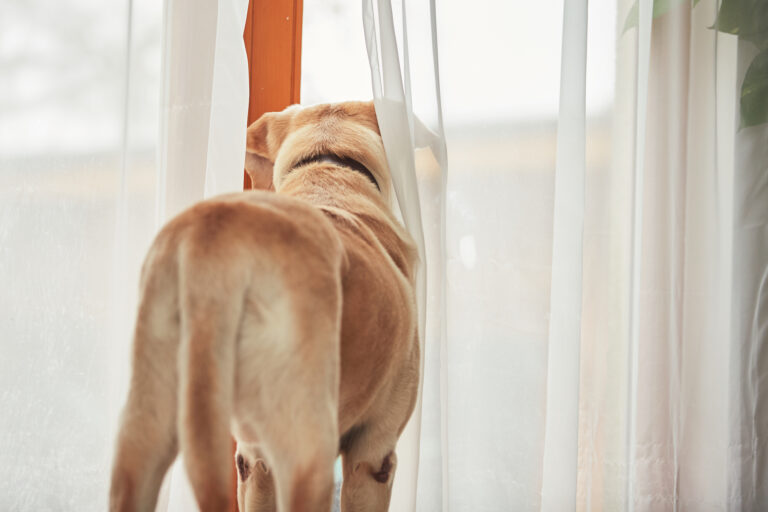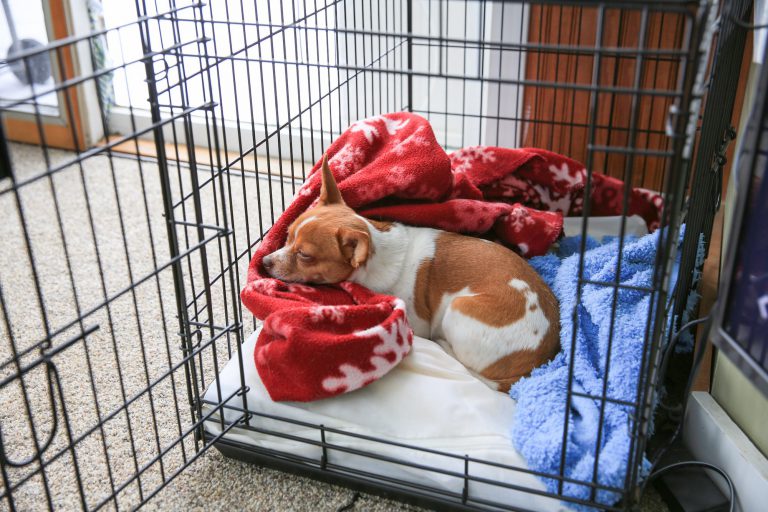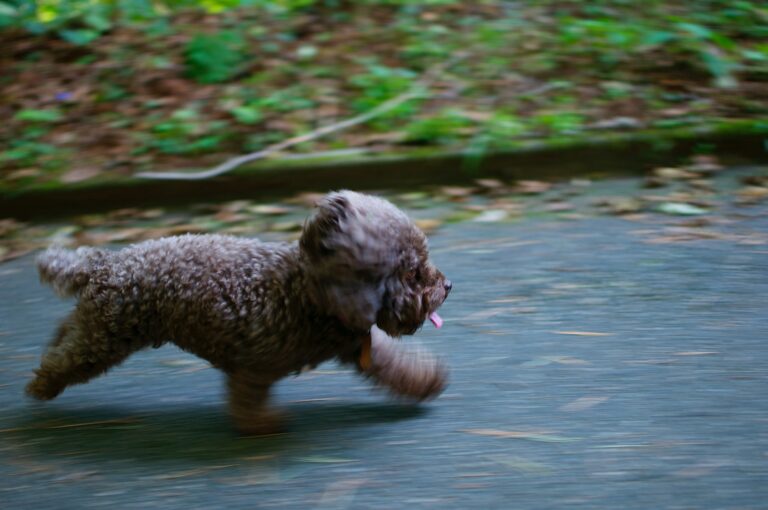The last year (or two) has been challenging for all of us in different ways but for many dogs, this “unprecedented time” has been a bit of a dream come true—their favorite people have been at home around the clock! In fact, for dogs born and/or adopted during the pandemic, a quarantine might be the only reality they know.
Eventually, though, things will change (they will! They have to, right??) and many people will be returning to some version of their routines of actually leaving the house for work, school, and socializing. Which means many dogs will go from constant companionship to suddenly being expected to be home alone for long periods of time. Getting used to calmly being home alone will take time and practice for dogs, and being intentional about helping your dog adjust may help prevent, or mitigate, separation anxiety. Here’s how to ease the transition.
Understanding separation anxiety in dogs
Separation anxiety is a serious condition that impacts an estimated 13-18% of dogs, and is diagnosed in 20-40% of the dogs that have been referred to behavioral specialists. Most dogs dislike being left alone, but dogs with separation anxiety become severely distressed when left by themselves. Signs of separation anxiety can range from mild to extreme—from panting or whining, pacing, and inability to settle in a crate, to more serious behaviors like urinating or defecating, excessive drooling, house or furniture destruction, and non-stop barking/vocalizing. For dogs with separation anxiety being left alone isn’t just unpleasant; it can be panic-inducing.
How to tell if your dog has separation anxiety
Dogs who experience separation anxiety will often become sensitive to signs that predict the owner is leaving, says San Francisco-based, CPDT-KA-certified trainer, Alisha Ardiana. The dog might become anxious when you are gathering your belongings, putting on shoes, or putting on a mask. They may try to block your departure, start pacing and vocalizing, or begin chewing on things that are normally off-limits.
What to start doing now to reduce separation anxiety

Make a separation anxiety training plan
It’s never too early to start helping your dog learn (or re-learn) how to be home on their own. What you don’t want to do is go from strict lockdown and home 24/7 to returning to the office full time overnight without giving your dog a chance to adjust.
Try to introduce any new routine in stages, and program some alone-time every day. Even if you’re not going back to your workplace just yet, start mirroring your eventual schedule now when it comes to wake-up times, bedtimes, and walk times. Plan on leaving the house in the morning, for example, and at lengthening intervals during the day. Leave your dog home while you take a walk around the block or even go sit somewhere else and answer emails (the change could do you good, too). It sounds like a bit much, but creating a schedule can help—otherwise it’s tough to factor things like “leave the house for 15 minutes” into your day.
Eliminate the anxiety triggers
Before you even leave the house, start desensitizing your dog to those things that may trigger anxiety—things like picking up your keys, putting on shoes, etc. Determine what the specific triggers are for your dog. Go through the motions of doing these things, but don’t leave.
Practice systematic desensitization
The term sounds a bit scary, but the idea is simple: Start leaving your dog alone for very short amounts of time, and build up their tolerance. “Short” could be as short as 10 seconds, depending on how anxious your dog gets when you leave. Slowly build up the length of time they can remain calmly alone. Studies have shown that this systematic desensitization approach is one of the most effective ways to address separation anxiety in dogs.
Add in counter-conditioning
This step often goes hand in hand with desensitization. When you’re away, provide benefits; when you get home, take the benefits away. It’s not a cure for true separation axiety but it can help dogs develop good habits and develop positive associations with your leaving. Durable rubber toys stuffed with healthy treats, or their food, can provide a way for your dog to self-soothe while you are away, while also providing mental enrichment. Prep and freeze toys ahead of time which will help the treat last longer and create more of a puzzle for your dog to solve while home alone. For something outside of the usual treat options, try frozen Chamomile tea—after bringing brewed tea to room temperature, pour it into a Kong and freeze it, then give it to your dog to lick. The same soothing properties that work in people can also work as a calming aid for dogs. It can also help to leave the television, radio, or a white noise machine going when you leave. These intentional sounds will help block out sounds from the neighborhood that could inspire your dog to bark. The sounds can also be calming and help your dog relax as they mirror the day to day sounds your dog is used to hearing when you’re home.
“The dog needs to learn to settle in your presence, before they can settle in your absence.”
Make departures low-key
Don’t get emotional or make a big deal out of leaving or returning home. Don’t give your dog a big cuddling session right before you go, or act like you haven’t seen each other in years when you return (wait til they’re calm before giving attention when you come back home). The idea here is to reinforce a NBD vibe about your comings and goings.
Train independence
One big, sometimes overlooked, step in warding off separation anxiety is to train your dog to be independent during the hours you are together. When your dog has non-stop, free access to affection, attention, and couch time, they can become dependent on those types of rewards; then when those things are suddenly removed, they don’t have the skills needed to just relax. Be sure you’re setting boundaries in your everyday life with your dog, and creating moments when you’re separated when you’re still home. Have them settle in their crate or in another area of the house; after an interval of quietly chilling, praise them and give them a treat.
“The dog needs to learn to settle in your presence, before they can settle in your absence,” Ardiana says. For some dogs this comes naturally, and other dogs need support learning these skills. Ardiana encourages dog owners to identify activities their dog enjoys for food, enrichment or chewing, and then provide access to those foods/toys/activities in the room where they will be staying, first while you are busy in another part of the house, and then as you begin leaving.
Up the exercise
The expression “a tired dog is a good dog,” is a classic for a reason. Try to give your dog a vigorous walk or run before you leave. Ample, regular exercise generates serotonin, which has a mood-stabilizing, calming effect, and provides an outlet so your dog is fulfilled and can relax when they need to.
See what’s actually happening at home
Worried that your dog might have separation anxiety? Or just curious about what your dog is getting up to during the day? Some owners actually struggle with separation from their dogs more than the dogs do. To help support everyone adjusting to new routines it can help to be able to monitor what your dog is doing with a video camera. There are a variety of dog-specific cameras on the market, some that will even allow you to remotely dispense treats. An economical option is a WiFi-connected home-security camera which can allow you to monitor your dog from your smartphone. This will help give you peace of mind that your dog is relaxed, or help you to get a better idea if your dog is panicked and exhibiting signs of separation anxiety and needs extra support.
Get help
If you think that your dog is experiencing severe separation anxiety, schedule an appointment with your veterinarian. Your vet will be able to help rule out any other possible underlying medical conditions that could be causing the symptoms of distress. It’s also a good idea to begin working with a trusted trainer who has experience working with dogs who have separation anxiety. Your vet and your trainer may work in tandem to help create a management plan to support your dog.
There’s another way you can ensure you and your dog are at your happiest during the day—bring them to work! In a recent survey from Banfield Pet Hospital, half of executives surveyed said they planned to allow employees to bring their pets to work when they return to the office, and 59% said they’d allow more flexibility for remote work to accommodate caring for pets. If you work in an office, consider raising the issue with your bosses—the survey indicated that 59% of executives said their plans concerning office pets were motivated by employee requests.
Whatever your post-COVID situation looks like, remember it’s not fun for anyone to be left alone for long periods of time. Be sure to arrange for someone to take your dog for a walk if you plan to be out all day, whatever the reason.











